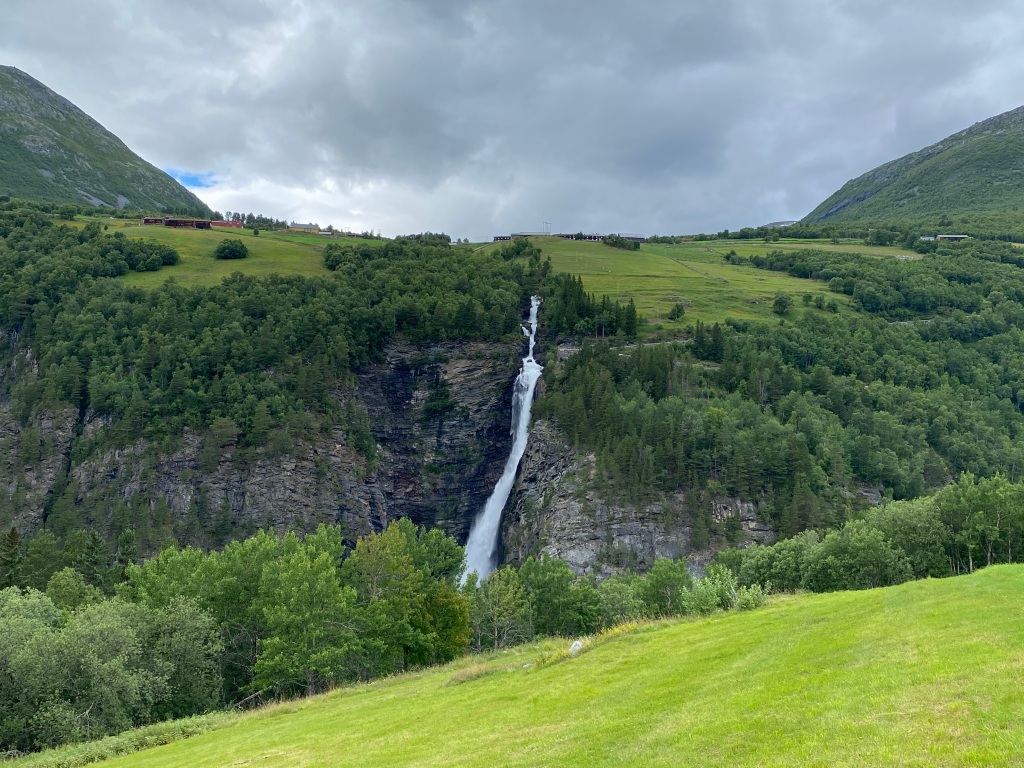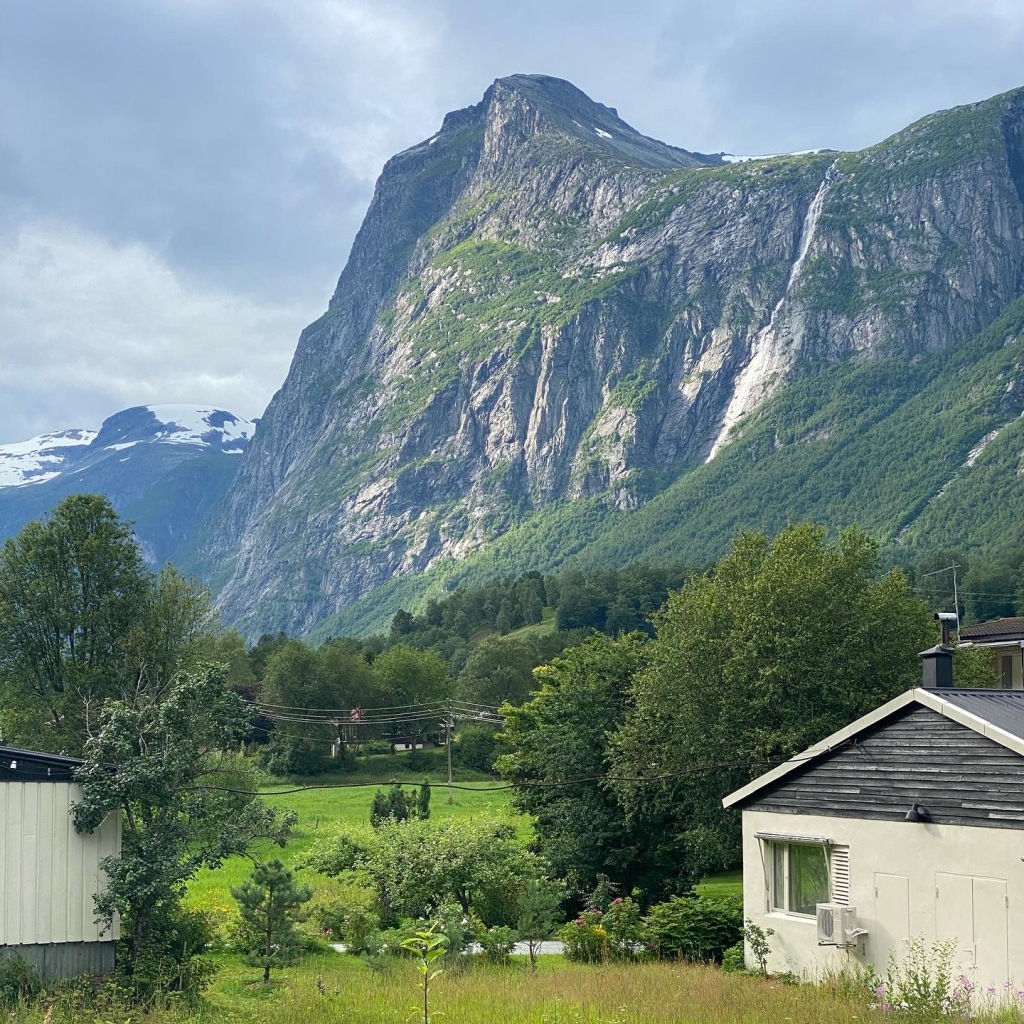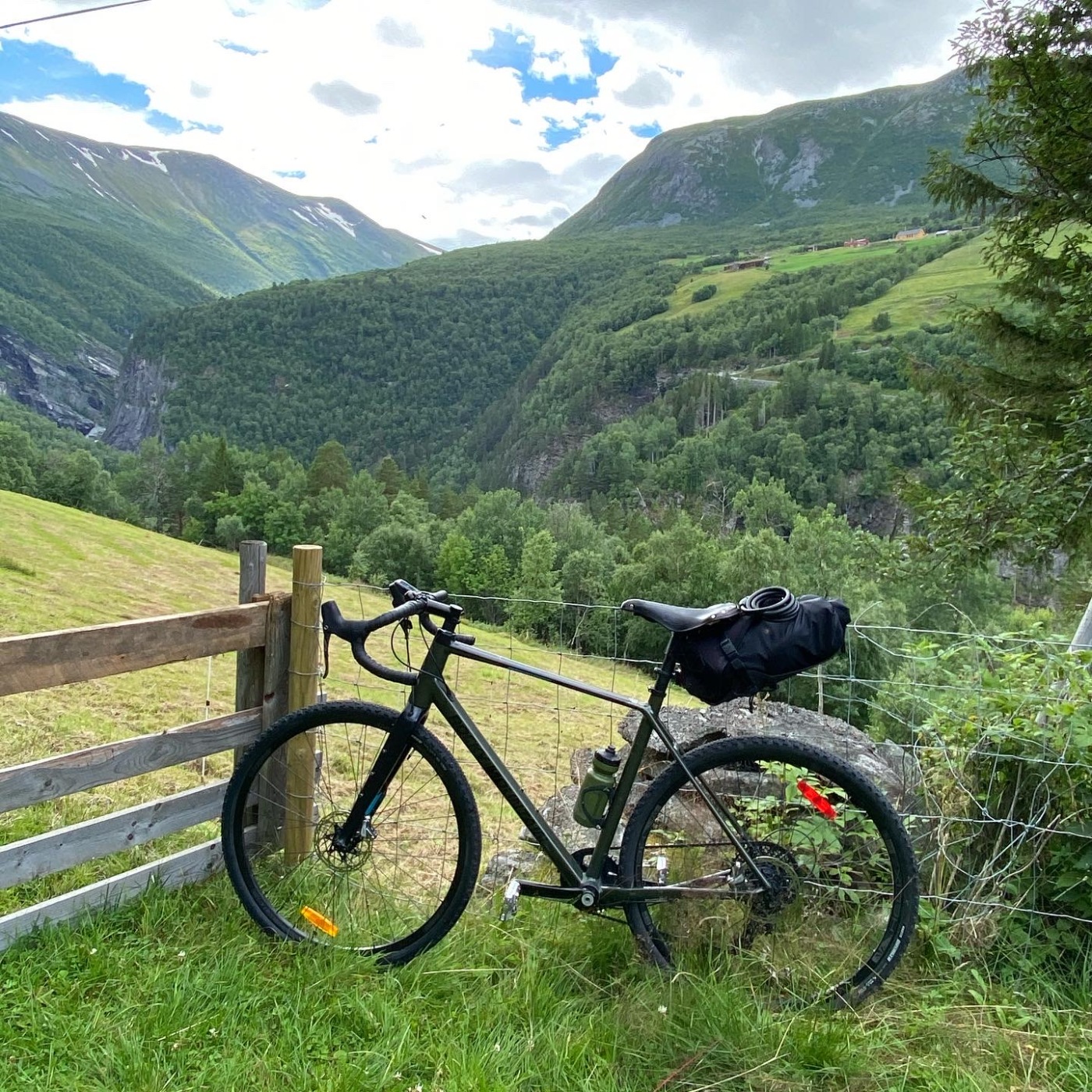Deep valleys, high mountains and misty fjords.
Get a splendid impression of this Norwegian fairytale landscape, crossing from a railway station in the mountains to a station by the sea. This 276 km route is described from the ski resort Oppdal to the alpine town of Åndalsnes, and can easily be divided into several legs. The trip was done in late summer, which is better for crossing the highest part of the route, without the hassle of too much snow.
The route is recommended for experienced and fit riders, as it will take you through a combination of main roads, hard climbs and steep descents on gravel.
Sunndalsøra, Eikesdal and Eidsvåg will be the only places along the route where you can expect to refill. There is also a cafe at Aursjøhytta midway in the mountains, where you should check for opening hours. In the summer season there are camping sites, and different kinds of places to stay overnight along the road. Out of season there will still be a couple of hotels at Sunndalsøra.
View first leg, Oppdal to Sunndalsøra here: https://ridewithgps.com/routes/35158159
View second leg, Sunndalsøra to Eikesdal here: https://ridewithgps.com/routes/35158163
View third leg, Eikesdal to camping outside Åndalsnes here: https://ridewithgps.com/routes/35158166
View last (short) leg, entering Åndalsnes here: https://ridewithgps.com/routes/35158172
Highlights
- The protected landscapes of Åmotan-Grøvudalen is a detour worth the effort
- Hydro Aluminium, the cornerstone factory of Sunndalsøra, powered by the water falling from high altitudes in the nearby mountains
- The valley Litldalen, by Sunndalsøra, walled by the mountains and with desolate farms. At the end look for the remains of the old railway lift, and the line on a shelf 800 meters up in the mountainside.
- The descent to Eikesdalen, with some incredible views
- Nesset prestegard, old vicarage and home of the Norwegian writer Bjørnstjerne Bjørnson. Now a museum.
Things to remember
- Always check weather conditions before crossing the mountains from Sunndalsøra to Eikesdalen
- Bring something warm for the mountains, and a good wind jacket for the steep descent
- You will need a strong front light, as the steep road passes through a totally dark tunnel i a spiral. I got through by following a car
Oppdal to Sunndalsøra
The first part is along, and on the main road towards Kristiansund. I started off from Oppdal (550 m above sea level) an early Saturday morning getting the road mostly for myself. Oppdal is a popular destination, not only for downhill skiing, but for all sorts of a activities from climbing to off-road cycling. In the village you’ll find a good choice of shops to get the equipment you forgot at home, or cafés, restaurants and bars if you want to get to know some people. When leaving Oppdal you are soon passing through a wide valley in a rural landscape with traditional old farms surrounded by grass fields all the way up to the mountains.
After a while on the road it starts descending, and you are leaving the wide part of Sunndalen valley for a deeper version of it. The mountains turn more dramatic, and you’ll notice the lonely farms high up in the green mountainsides. Most of them are left, but you can see the light on, or some farmer out working still.

The descent is quick, and the road flattens when reaching the bottom of the valley. Now you’re following the river. Some places it is possible to follow quiet roads instead of the main road. When arriving at Gjora, where the valley does a bend, I suggest taking a detour, following the signs towards Hafsåsen and the National Park. Further in this valley, don’t cross the bridge but keep to the left and climb the steep road to Åmotan. Here you will be awarded with a stunning view in all directions. Powerful waterfalls, dramatic canyons, well kept farmland, wild mountains and historical mountain farms makes this a unique spot, not to be missed. If you are lucky the cafe will be open, and I recommend spending some time here just to get an overview by following the signs to different viewpoints, all within 5 minutes walk.

Back to the main road and Gjora, continue towards Sunndalsøra. Remember keeping your focus on the road and the traffic, as it will be hard to not be disrupted by always changing views towards majestic peaks and wild waterfalls. Down the valley you will also get a chance to do a stop at one of the worlds highest waterfalls, Vinnufossen, or you might want to do a stop at Leikvin Cultural Heritage park to see vernacular buildings or experience the remains of an English landscape garden. This dates from the 19th century when British travellers discovered Norway, for fishing and climbing. One women in particular left her mark in the local society of Sunndal, lady Arbuthnot. She settled here after a life in Ireland, Belgium and Scotland, marrying her third husband.

Sunndalsøra is the total opposite to many of the built environments you’ve passed along the road down from Oppdal. This is an industrial town, with the largest site for production of primary aluminium in Europe. It is powered by the high fall of water from the surrounding mountains. The architecture here is modern, but you can still find some houses inspired by the British Garden City movement. There is also a shopping centre, for if there’s anything you need to provide for the rest of the journey. I recommend trying the local speciality “Vaffelgrøt” (waffle-porridge). You’ll find it in the shopping centre’s bakery. It’s a waffle with a sweet sour cream porridge inside. It will power you up for the next climb, and I guarantee that you will need it.

Sunndalsøra is enclosed by high mountains, and is connected to the Atlantic Ocean by fjords. This combined with winds creates sometimes the foehn wind effect, with temperatures sometimes reaching between 15-20 degrees in mid-winter. This creates ideal conditions for cycling in this region even when large parts of Norway is covered in snow. But keep in mind that these conditions can change quickly, and in some exposed places these winds can be quite strong.



Sunndalsøra to Eikesdal
After a break, or for many an overnight stay in Sunndalsøra, the journey continues inwards and upwards. Follow Litldalen (Little Valley) to start climbing the serpentines of Aursjøvegen. The valley is a quiet space between solid walls of rocks ascending to the sky. But it is never silent, due to the continuous sound of waterfalls. You might even get to hear the sound of falling rocks or an avalanche if the conditions are right. What is less probable is a glance of the sun. I traversed the valley a late morning in August. The skies were blue, but the warming rays of sun never reached down. A few desolate farms are scattered around the valley, but I never saw any sign of activity as I passed. A fun fact is that this valley once had a railway, and a railway elevator lifting the train from the track in the valley to another track 800 meters up on a man made shelf in the hard rock mountainside. The railway was used for the construction of dams and tunnels for hydroelectric power, but it also picked up some passengers on it’s way up and down from Sunndalsøra.

Cyclists today won’t get help from any train lift, but have to climb the mountain themselves. Once you have done the steepest part you are also in a different landscape, in a high mountain terrain. Here the snow is left most of the summer, and you can expect a much colder weather than further down. The road here is gravel, and quite bumpy. I wouldn’t bring my speedy road bike here if I could choose. A cyclocross or gravel bike is perfect. The road also turns and twists, going up and down, and around every rock. If the weather allows it, stop by one of the clear mountain streams. They are the most relaxing features of the mountain I can find. Another good feature in the Norwegian mountains are the tourist cabins, where you can stay overnight, or just stop for a good meal. Aursjøhytta is one of these, and I took the opportunity to fill up with some Bacalao, a Spanish inspired meal made from tomatoes and dried cod fish. This is a common course on the Northwest coast of Norway as they for centuries have been trading this fish with Iberia, Italy and all the South American countries.

The road from Aursjøhytta to Eikesdal is this leg’s highlight. It brings you back down into the lush valley. But first you’ll have to hold on to your bike, use your breaks carefully and look out for the worst bumps. The road is often on the edge of a steep edge, so any small mistake can be fatal. The views you’ll get though are breathtaking, and if the weather is right you will also feel how the warm valley air is welcoming you back down.
Eikesdal used to be a place only reached by a tiny ferry across a long lake. The desolate valley came into the limelight the summer of 1970. This was due to one of the first environmental protests against the large scale development of dams, redirecting rivers and waterfalls into tunnels and tubes for hydroelectric power. Mardalsfossen, one of Europe’s highest waterfalls would be lost. The development went through, but during summer the waterfall they took is turned on from 9 AM until 21 PM.

Eikesdal is a good place find rest for the night, with two camping sites and some cabins for rent. There is also a café down by the fjord, but they close quite early. You’ll need to bring food with you if you’re to late for the café or just want to manage on your own.
Eikesdal to Åndalsnes
The last leg on this tour takes you along the Eikesdal water and across to the fjords. There are two possibilities to continue to Åndalsnes, on either side of Langfjorden. The shortest is across the mountain from Eresfjord to Vistdal. My journey though went east and north of the fjord, and included a ferry to get back across. After filling up in a local bakery in Eidsvåg I cycled into heavy rain, and spent some time underneath a metal sheet covering some stables of firewood, and me.
I spent the night just outside Åndalsnes, and got the most beautiful ride around Isfjorden, with a splendid view towards the little town being uncovered from the morning mist together with the giant peakstowering around.

From Åndalsnes you will find a train connecting you to the railway network further east. If you still want to ride further, Åndalsnes is the gateway to epic climb of Trollstigen, and further to the tourist hotspot of Geiranger.

Leave a comment